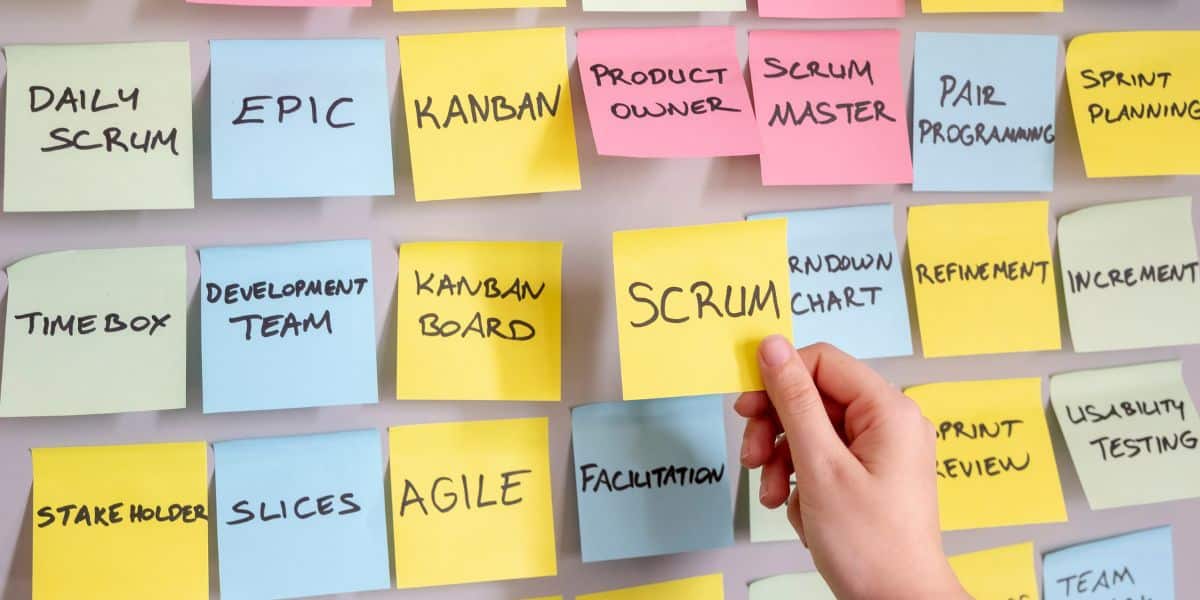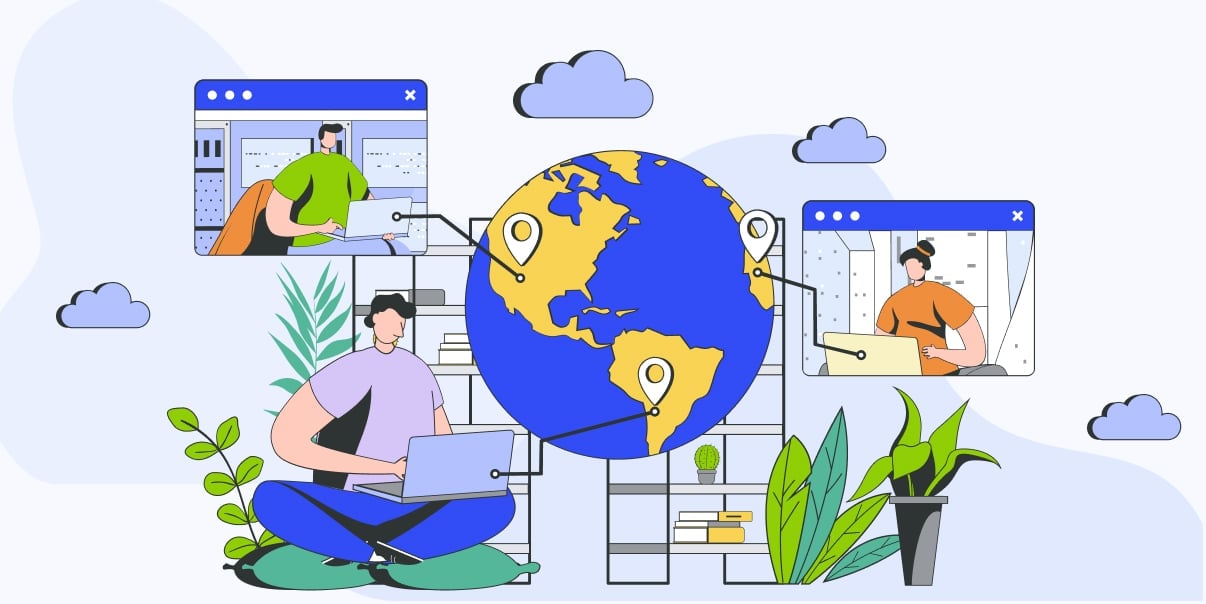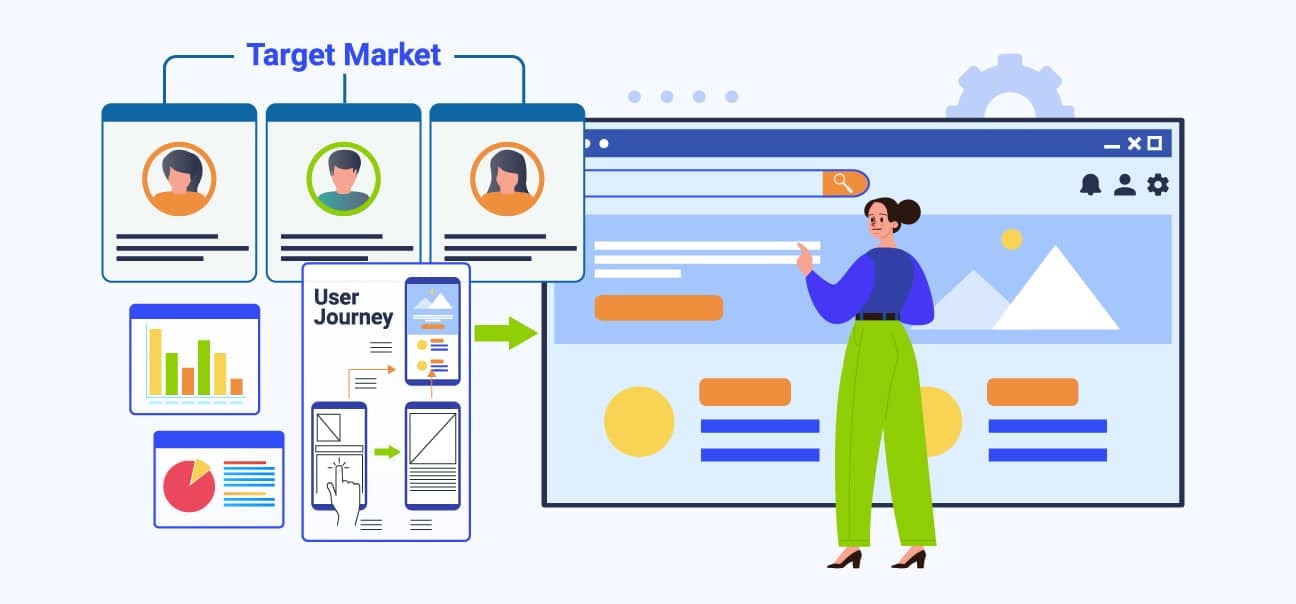A Definitive Step-By-Step Guide to Software Development Process

The very first computer software was created in the 1950s. But back then, there was no standardized software development process. Today, each software development project follows certain procedures. These steps enable the delivery of superb software development services. Moreover, it made sure that every software that was released was of high quality.
What Is Software Development Process?

Since the first computer program was created, major changes have been observed. This is especially true in the product development cycle. Documentation became a crucial part of the process. Both developers and stakeholders required a single document. The said document contains all the changes that happened in every development stage.
The idea of what is software development life cycle (SDLC) now came from this.
Thus, what exactly is software development? It is a thorough process. It involves various steps. This usually begins with having a product idea. Then it is followed by the development stage. But it does not end with the software’s launch. It also assesses whether the software product meets the business’ needs and goals.
Since then, the software development lifecycle has changed in numerous ways. This is especially true for businesses with complex systems. Complex systems demand lots of analysis and data processing.
With a streamlined software development lifecycle, the software’s quality is not compromised. It also allows developers to examine the best approaches and deliver the project on time. Due to this, various methodologies emerged. The concrete examples of these are Agile, Waterfall, and Spiral software development processes. These approaches follow unique software development methodologies.
Stages of Software Development Process

Project managers must fully understand the different stages in the software development process. They should know the project requirements and possible challenges they might encounter.
In addition, they should communicate the process of software development clearly. Communication is essential because PMs will work with different people. They have to coordinate with software engineering experts. Likewise, they also need to work with designers. A breakdown in communication may cause silos.
On a closer look, the software development planning process may look the same. However, the order of the basic software development process may vary. Changes can happen. The software developed may need an upgrade or drastic modifications. It all depends on the project’s goal, scope, and team bandwidth. The steps in the software development process can be combined. They can be also duplicated or run in parallel.
Requirements Analysis and Resource Planning
The first step in any process development software is always to plan. You need to decide if the software projects you want to make will help reach your business goals. It is a look at what people need. The point of any software is to make tasks easier. So, it would be best to consider what jobs you want to improve and how the software will help you.
The next step is allocating resources for the software development lifecycle. You must determine what assets you might need to perform the task. Then, you must develop a budget that is both flexible and reasonable.
We recommend using a project management tool at this stage.
Design and Prototyping
The design and prototyping stage follows the analysis and planning stage. Design in the software product development process is not just about the look. It is also about how it works and how the user interacts with it.
You can make a big difference in the design process by telling the people making the software what you want it to do. You can choose how users will interact with the software application product.
You can also have complete prototypes showing how the product works if necessary. At this point, you can see if there are any problems or if there aren’t enough features. This is why this stage is important in every software development methodology framework. It’s easy to make changes, and once everything is good and settled, you can start developing.
Software Development
Clarity plays an important role in the software development process. Steps, features, and design must be clearly defined before you start writing the code. There are different ways to make software, depending on what kind of software is needed. This will be further explained in the succeeding sections.
Testing
Software engineers and developers initiate the software testing phase. In the rapid development process, testing ensures that the product works, is easy to use, and is stable. We have QA testers or people who test for quality assurance.
This team checks all of the code written by the software development team. It is done both by hand and with the help of tools automatically. Bugs are fixed by making changes to the original code or adding new code.
Deployment
It is an essential step in the process of making software. After coding and testing, the next step is to put your software on the correct servers and devices. You can only do this after you have approached how the product works and shown that it is stable.
Often, the created Alpha release is only suitable for the product. A small group of users try out the product and give their thoughts. When evaluating the feedback, changes to the software are possible. For example, you can switch to a Beta vision, and more people can now use the software program.
Maintenance and Updates
As we already said, making software is a cycle. It is an iterative process for creating software. Launching the product is not the end of the process. You need to keep up with software maintenance and update it regularly. You must keep an eye on software development and make changes as required.
It is necessary since technology is constantly changing. Software products require an update to keep up with these changes. As time passes, different requirements emerge for users. Also, user feedback is an essential part of updating any software product. Lastly, we make software that is easy to scale up or down in the future as software development trends and needs change.
Software Development Process Metrics

Metrics for software should be essential to how the developer creates the software. Here, the program Management Officer (PMO) should learn more about the proposed metrics. On the other hand, developers should agree to use them consistently. Developers are also expected to report on them.
In the Software Development Plan or SDP, it is essential to spell out the metrics used. Metrics for software should include:
- Taking part in how the software developer works
- Showing the difference between the expectation and what occurred
- Forecasting of situations that need attention from the project manager
- Helping figure out how the proposed changes to the program will affect it
The Best Software Development Processes (and How to Pick the Right One for You)

Every great software starts with a plan and a straightforward software development process. You can choose from many different types of software development processes.
However, how do you know which process of software development is best for you? In this guide, we’ll talk about the basics of your software development lifecycle. We’ll also discuss the pros and cons of the five best software development process models.
1. Waterfall

The Waterfall model is one of the oldest software development process models. It is also called the “linear sequential model” or the “Classic lifecycle model”. In its most basic form, the Waterfall process is like going through each step of the SDLC in order.
You have to finish each step before moving on to the next one. But if we talk about what happens in real life, the phases may overlap a little. It is possible to have plenty of back and forth when it comes to the exchange of feedback and information. Some people call this a “plan-driven” process. It’s because you have to know what needs to complete and in what order to finish a project. The name “Waterfall” came about because each part flows into the next.
Phases
- Planning
- Requirements analysis
- Software system architecture
- Implementation
- Testing and risk assessment development
- Product release
- Maintenance and updates
Who Can Use It?
Technically speaking, anyone can use the waterfall model. But if large companies will use this method, they need to be specific in their requirements. It is because the Waterfall method is so strict. Once the stages in the software development process start, it’s hard to make changes.
Pros and Cons
Pros
- The rules are already set
- The project stays on track with its plan
Cons
- The approach is not flexible
- Longer delivery times
2. Agile and Scrum

Agile and scrum favor an iterative and dynamic approach to development. Cross-functional teams in Agile work in “sprints” when building software. Sprints usually last for two weeks to two months. This is in stark contrast to Waterfall’s strict sequential flow.
Agile is about moving quickly and installing new versions often. Its goal is to accommodate the changes asked by the users. As a result, there is a possibility to change the plan from time to time. This also means that you do not need to have a complete list of requirements and a detailed statement of work (SOW). More often than not, these considerations are identified before working on a project. But not so much in agile.
You move in one direction with the idea that you will change rules along the way. Agile software development process flow is a lot more than this. But here is a simple example of how it might look in real life.
Let us say you want to add several features to your product. Here you would make an “agile sprint” and make the bare minimum that is both useful and usable. You will give this version to the customers and get their input to ensure alignment. As you can see, the project sees progress. It may be minimal. But at the very least, it did not take you months to build everything. It is the goal of this software development process to help the team meet the client’s needs in a short time.
Phases
- Product backlog
- Sprint backlog
- Sprint design & development
- Release of working software
- Feedback and validation
- Planning of next sprint
Who Can Use It?
Any project team with a lot of energy makes regular changes to products.
Agile works well as a software development process for startups. Companies that want to test new applications or update existing ones may also use agile.
It is because agile is flexible and focuses on the user. With agile, companies can move faster and test ideas. They do not have to wait for the big release to make the necessary changes or modifications. Testing is done after each small iteration. Due to this, it is easier to find bugs. The development team will also find it easy to go back to a previous product version. This is most especially if something more critical breaks.
Pros and Cons
Pros
- The most adaptable software development process flow
- Software reaches the market more quickly
Cons
- Difficult to forecast the changes
- Possible challenges with scaling
3. Incremental and Iterative

The incremental and iterative process combines waterfall and agile development methodologies. It follows the structured approach of the waterfall. Yet, it has the flexibility of agile.
Under this approach, teams will present an initial version of the software. They will get feedback and show an “upgraded” version in the next release. The upgraded version shows the “incremental” change in the software. This could be a simple version of a new function or feature. Then, you can upgrade everything at once.
Phases
Incremental
- Planning
- Specifications
- Development
- Validation
- Repeat for every version
Iterative
- Analysis
- Architecture and design
- Development
- Testing
- Repeat phases until ready to release
Who Can Use It?
The incremental and iterative methods are best for teams with well-defined requirements. Teams that need more mobility than the Waterfall methodology offers may also benefit. Both give versatility to the software process without jeopardizing the entire strategy. This makes it perfect for big projects with well-defined scopes or risk-averse teams.
With the incremental development method, you receive quick feedback on your essential product. It enables you to prove your business rationale immediately. In contrast, the iterative process gives a preview of what the final product may look like. It allows for more significant and targeted input.
In both scenarios, you communicate with consumers early on exactly what they expect. This will save you a significant amount of time, money, and hassles. You do not have to wait midway through the software development cycle to make the changes.
Pros and Cons
Pros
Incremental
- More affordable than other models
- Problems are readily recognizable
Iterative
- There is a greater emphasis on design and architecture than on documentation
- The operational time is decreased
Cons
Incremental
- The procedure might be lengthy
- It needs preparation even for changes in the future
Iterative
- There may be an increase in resource expenditures
- There is no overlap between succeeding levels
4. V-Shaped

The V-shaped or V-model software development process is an adaptation of Waterfall. But it compensates waterfall for its worst flaw: a lack of testing.
The V-shaped method conducts rigorous “verification and validation.” It tests the requirements and specifications before going on.
Phases
- Requirements analysis
- Specifications
- High-level architecture and design
- Low-level architecture and design
- Development
- Unit checking
- System Integration
- System checking
- Acceptance testing
Who Can Use It?
This method is ideal for teams focusing on small projects with limited scope. The V-model software development process is suitable if you have a small project. It helps your team become proactive and solve bugs immediately.
Pros and Cons
Pros
- Straightforward and easy to use
- Before coding, you can test processes like planning and test design
- You can save more time
- Greater success probability than the waterfall method
- Proactive fault tracking lets you identify flaws at a preliminary phase
- It prevents the downward movement of faults
- Effective for small projects when requirements are straightforward
Cons
- Extremely rigid
- Not flexible
- Constant update of test and documentation requirements
5. Spiral

A Spiral methodology is a risk-driven approach. This methodology emphasizes testing and in-depth risk analysis.
The first phase involves preparing for an iteration or a significant accomplishment.
The next stage is risk assessment. This will determine which sectors are in danger and where mistakes occur. Then, you repair the problems in the prototype and get further user input.
This gets a milestone. The scope of software development spirally increases at each phase.
Phases
- Planning
- Risk Analysis
- Development and validation
- Result testing
- Plan and prepare the next spiral loop
Who Can Use It?
Not most folks can use the spiral model. This practice is ideal for those engaged in a big project with tiny room for error. This procedure is both time-consuming and costly. To proceed with this development, you must be sure of the requirements. Why? The spiral software development process can be expensive.
Pros and Cons
Pros
- Very flexible methodology
- Ideal for big, intricate projects
Cons
- Incredibly expensive
- Not suitable for smaller projects
Conclusion
We hope this post helps you understand the basics of software development better.
Whether using Waterfall or Agile, the heart of the development phase is the same. BIT Studios combines the different processes to ensure timely delivery at cost-effective rates.
With our experience, we know how and where to take your concept from validation to deployment.
Feel welcome to contact us if you have any questions concerning software development.
Software Development Process FAQs
What Are the Basics of Software Development?
Within software development, six primary phases characterize the software development process.
The following are:
- General assessment and requirements enalysis
- Product architecture and design
- Coding
- Testing
- Product deployment
- Product operations and maintenance
How Do You Accelerate the Software Development Process?
There are several software development steps you can take to prevent delays. Here are some methods for accelerating the software development process.
- Establish clear objectives
- Develop and, if possible, expand your team
- Establish precise criteria and a plan
- Minimize your work in progress (WIP)
- Avoid frequent changes
- Resist technical debts
- Avoid lengthy work hours
- Automatize as much as possible
What Is the Best Software Development Process for a Tech Startup?
Any company can structure its SDLC processes in an infinite number of ways. However, startups have limited options due to limited budget, resources, and talent.
Here is what we recommend for tech startups.
Agile
In agile methodologies, startups can rapidly iterate without process-based constraints. Each product iteration is conducted in “sprints” with brief objectives.
Waterfall
Waterfall is a traditional method for developing software solutions. The stages follow strict but well-defined processes.
Lean
The Lean model is a manufacturing strategy. Yet, it has been used in software development. Lean’s critical elements are effectiveness, productivity, and rapid delivery of products.
Iterative
This concept is a cycle-based variant of the waterfall method. The development team implements new system modifications after each phase or iteration.
We’re BIT Studios!
At BIT Studios we specialize in designing, building, shipping, and scaling beautiful, usable products with blazing-fast efficiency



